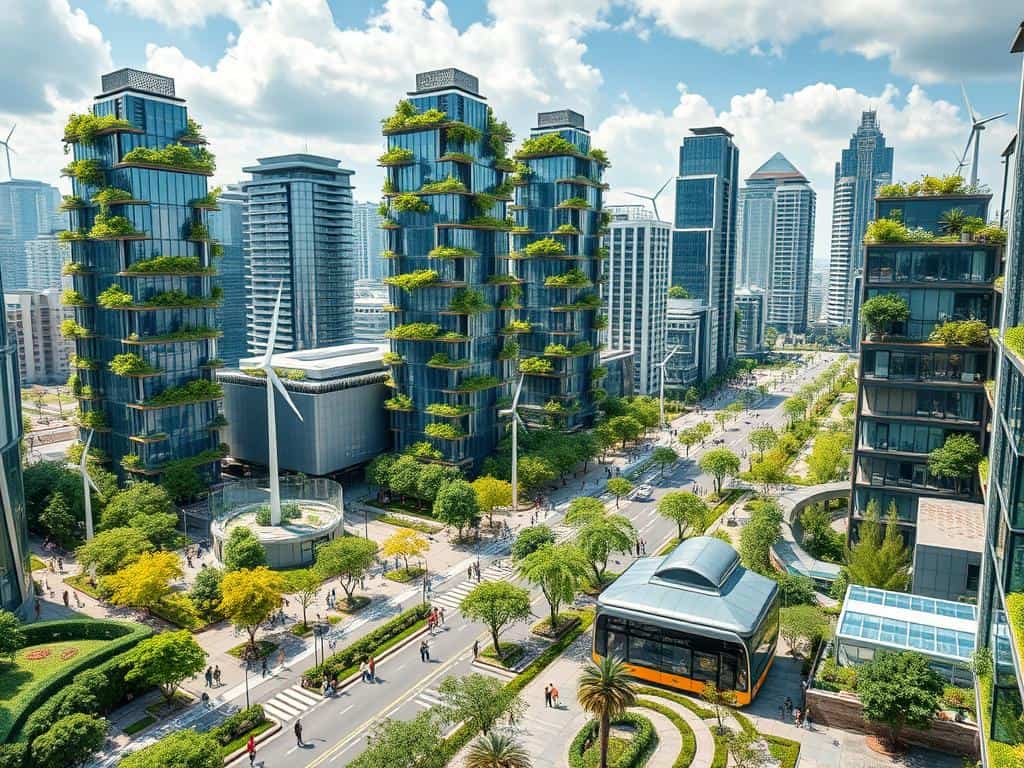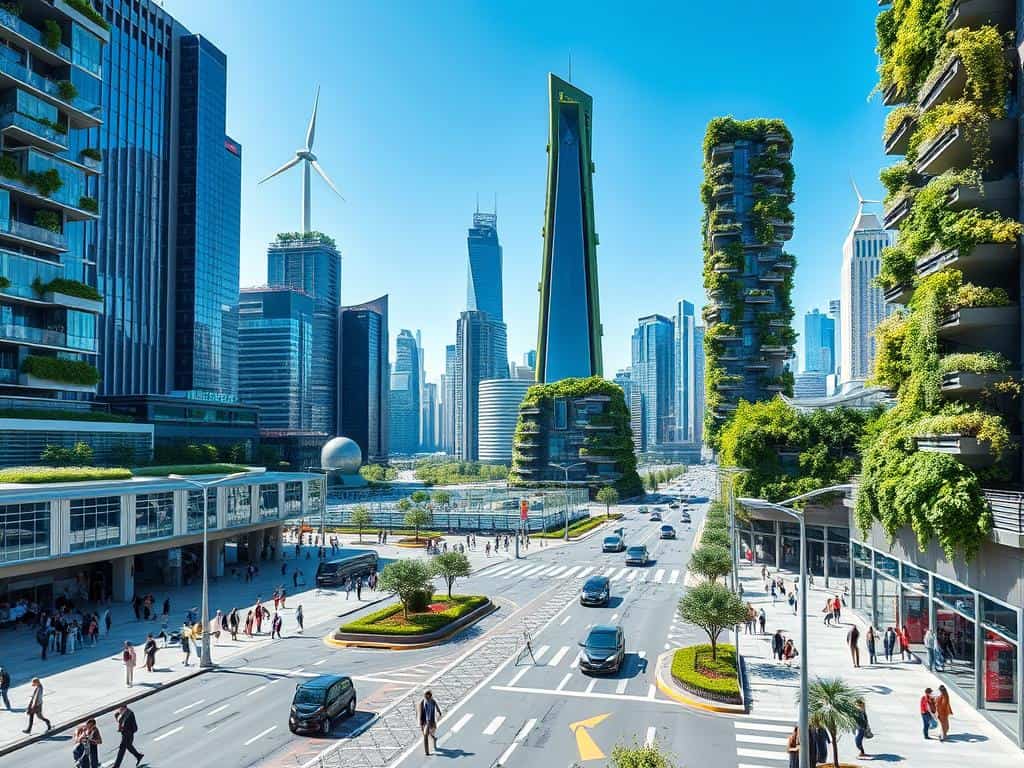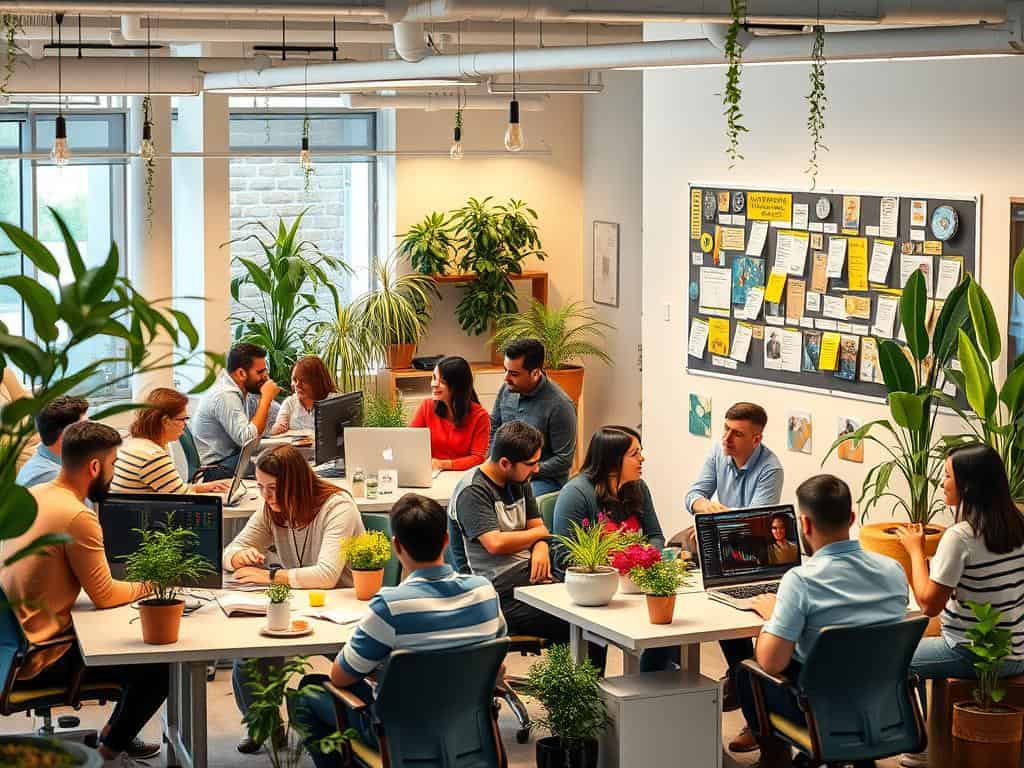Did you know over half of the world’s population lives in cities now? As we look to 2024, cities are changing fast. They’re becoming key places for new ideas and green living. A report by Deloitte, “Urban Future with a Purpose,” shows 12 main areas changing cities by 2030. These include better ways to move around, stay healthy, learn, use energy, and be strong economically.
But cities face big challenges like climate change and unfairness. The rise of smart cities is a big change. They use technology to make life better for everyone and protect the planet. By using data and smart planning, cities can be fair for everyone.
Key Takeaways
- More than 50% of the global population now lives in cities.
- Smart cities focus on sustainable and inclusive urban planning through technology.
- Investments in mass transit and green infrastructure can significantly reduce carbon emissions.
- Community engagement is key for smart city growth.
- A team effort can tackle big issues like climate change.
- AI is changing urban planning by giving us quick data insights.
Emerging Urbanization Trends Influencing City Development
Urbanization is speeding up, leading to new ways of building cities. Technology and green living are key to our future cities. These changes are making cities smarter and greener, which is vital for urban planning today.
Rise of Smart Cities
Smart Cities are becoming more common as tech plays a bigger role in city life. These cities use data to make decisions and improve life for everyone. Things like smart traffic and digital resources help cities run better.
The World Bank is putting about $5 billion a year into sustainable cities. This money helps create cities that are good for people and the planet.
Focus on Green Infrastructure
Green Infrastructure is also key for better cities. More parks and green spaces help fight pollution and make communities healthier. Projects like “Transform Freetown” show how green investments can make a big difference.
By adding more green, cities can fight heat and be stronger against climate issues. Investing in green projects is critical, as cities need $4.5 to $5.4 trillion a year for infrastructure. This helps cities grow in a way that’s good for both people and the planet.

Urbanization Trends Transforming Economic Landscapes
Urbanization is changing how our cities work. More people are moving to cities, with 2.5 billion expected by 2050. This means cities need to diversify their economies.
Cities are now focusing on tech and green industries. These changes could make cities more resilient and sustainable. They help us bounce back from the COVID-19 pandemic.
New Economic Drivers
Finding new economic drivers is key for cities. They’re looking into the green economy. This helps fight climate change and creates jobs.
By going green, cities aim to cut almost half of global carbon emissions. This creates a space for startups to grow. It also brings in new talent and helps those who lack basic services.
AI in Urban Planning
AI is changing how cities are planned. It helps with better planning and resource use. This makes infrastructure more efficient and adaptable.
AI is also key in reducing emissions. Cities are responsible for 70% of global emissions. Using AI wisely helps create sustainable cities. It ensures everyone has access to resources, promoting fair growth.
Conclusion
Looking at urbanization trends for 2024, it’s clear that cities’ futures depend on new strategies. These must focus on being green and using technology. With over half of people living in cities, adapting to these changes is key.
As cities grow, they need to put people’s health first. This means making spaces that are good for everyone. The rise of smart cities and green spaces will help meet urban needs.
By learning from each other, cities can handle the challenges of growing. This way, they can stay vibrant and fair for all. I’m hopeful about the future of living in cities.
By adopting these trends, cities can manage growth well. They can create places where people do well. With a focus on green tech, cities can be strong and ready for change.



